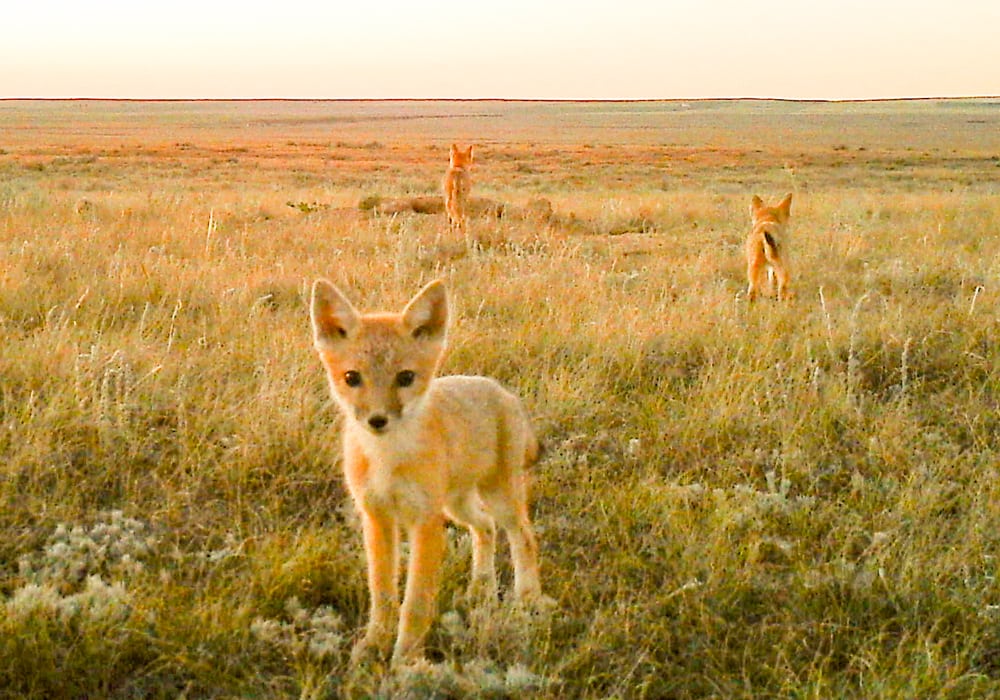At least five swift foxes are now resident in southeastern Alberta, a species that was declared locally extinct within Canada in the 1930s.
Cameras erected on property managed by the Nature Conservancy of Canada photographed the foxes in an area south of Medicine Hat and about 50 kilometres west of the Saskatchewan border in late July.
Carys Richards, communications co-ordinator for NCC in Alberta, said it is an exciting find because there were no swift foxes on the property when NCC took ownership 10 years ago.
“When I saw these photographs, I just couldn’t believe how amazing it is,” said Richards.
Swift foxes were once abundant on Canada’s prairie grasslands, but cultivation of land, loss of habitat and other factors led to drastic reduction in numbers, said Richards.
A privately run captive breeding program allowed them to be reintroduced to the wild beginning in 1997, and since then more than 900 have been released on the Prairies.
“It’s expected that every swift fox that’s in the wild in Alberta today, in Canada today, is descended from these reintroduced animals,” she said.

NCC is being deliberately vague about the exact location of the recently discovered den because swift foxes are sensitive to human disruption and the conservancy doesn’t want them disturbed.
NCC estimates there are now about 100 swift foxes in Alberta, but the species is still considered to be threatened.
Multisar, a multi-agency group that works on land stewardship projects, estimates there are about 500 swift foxes in Alberta and Saskatchewan. It did not return calls for comment about the recent discovery, though it lists the swift fox on its website as an endangered mammal on its species-at-risk roster.
The average adult swift fox weighs four to six pounds, making it smaller than a housecat. It earned its name through its ability to run up to 60 km-h.
Read Also

Farming Smarter receives financial boost from Alberta government for potato research
Farming Smarter near Lethbridge got a boost to its research equipment, thanks to the Alberta government’s increase in funding for research associations.
The foxes eat mice and ground squirrels, a trait that tends to please farmers and ranchers. They also eat the eggs of nesting birds, insects and road kill.
The latter puts them at risk of getting hit by vehicles, and they are also vulnerable to attack from coyotes and canine diseases.
Richards said it would be rare for most people to see a swift fox. Besides their low numbers, they are mostly nocturnal and spend a lot of time in underground burrows.
She added that the discovery of a den on NCC land shows conservation efforts have had a positive effect.
“We live in a world where there’s a lot of species that are constantly getting listed as endangered or extinct. It’s so easy to get caught up in all the bad news stories.
“Having a success story like the swift fox is really important to let people know that there’s still a lot of hope for these animals, and that by working together with local communities and land trusts and these kinds of partnerships, we can bring these animals back.”
Contact barb.glen@producer.com


















